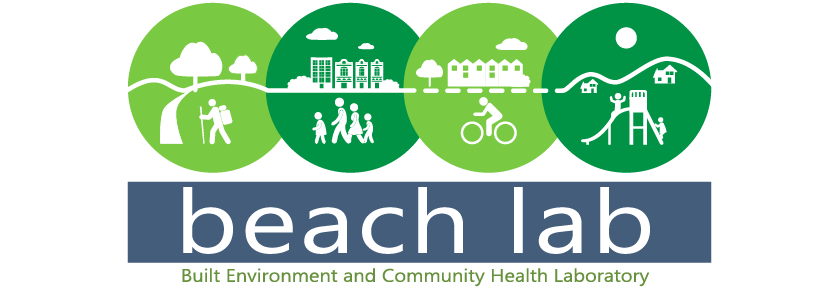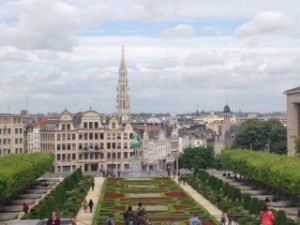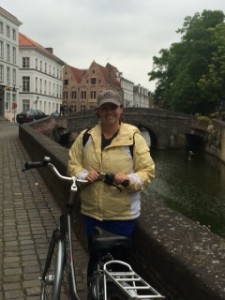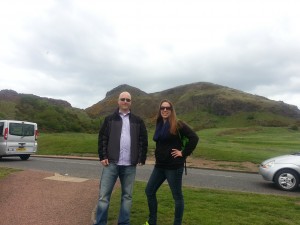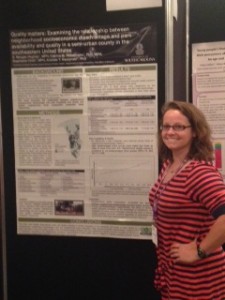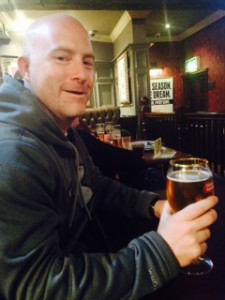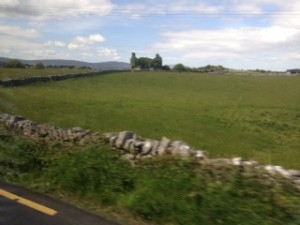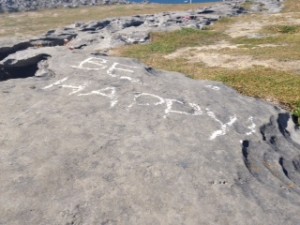Hi! This is Morgan Hughey, a third year doctoral student and member of the BEACH Lab. I’m on my flight back from an amazing conference and trip across the Atlantic. This is probably by far the most excited I’ve ever been to write a blog, but with good reason! With the support of the BEACH Lab and the University of South Carolina, I had the privilege to attend and present research at the 2015 International Society for Behavioral Nutrition and Physical Activity (ISBNPA) Annual Meeting in Edinburgh, Scotland from June 3-6, 2015. This meeting was my first international conference and an excellent opportunity for advancement, networking, and exploring new cities.
The first leg of my trip started a few days before the conference started in the wonderful country of Belgium. I visited the majestic capital of Brussels, where I was able to see some of the centerpieces of the city including the Grand Place, European Parliament, Mannekin Pis, St. Michael’s Cathedral, and many more. In Belgium, I also took a day trip to the coast to visit the beautiful Brugges, a canal city that boasts lovely architecture and excellent infrastructure for active living. I was struck by the number and high quality of bike lanes, sidewalks, and bike and pedestrian paths throughout the city that features accessibility to nearly any location a resident or tourist would want to travel. I realized the work we have cut out for us in many cities in the United States to promote active living and active transportation. Of course, I couldn’t leave Belgium without a plentiful sample of some of the world’s finest beers, including my new favorite, Kriek: a traditional Belgian lambic beer that has a cherry flavor.
Then, I arrived in Scotland for the most important part of the trip – castles! Just kidding! Edinburgh, Scotland was the location of the 2015 ISBNPA meeting at the Edinburgh International Conference Center. Unfortunately, due to travels, I missed the pre-conference workshop led by BEACH Lab alumnus Gina Besenyi about the newly developed electronic Community Park Audit Tool (eCPAT), which you can read more about here, but I heard the session was well-attended and everyone enjoyed learning about the project and testing out the eCPAT app in a local park. Starting bright and early on Thursday morning, I attended a wonderful and informative symposium of the role of parks in promoting physical activity. This featured four talented researchers from four different countries (Australia, Canada, England, and the United States). Each presentation focused on a different aspect of how parks can influence public health, from how adolescents perceive parks, how changes to parks influence physical activity, and physiological changes that result from spending time in green spaces. Our very own BEACH Lab director, Dr. Andy Kaczynski, organized and wrapped up this symposium with a presentation on the development of an innovative tool called ParkIndex that could be used to capture the potential for park access and use for a given area and that is empirically and spatially based. He discussed the potential for ParkIndex to be used in future research about park access and health and also as a tool for professionals and the public to understand how park access varies across neighborhoods and communities.
This session was followed by the morning keynote, a coffee break, and a bustling poster session. In the afternoon, I was able to learn about innovative methodologies, including qualitative approaches like PhotoVoice and Walk-A-Long type interviews and GIS/GPS methods to further the research on built environments and active living. Finally, Thursday was capped off with a lovely stroll to Arthur’s Seat and Carlton’s Hill, two hills that sit higher than most of Edinburgh and offer breathtaking views of the entire city and the North Sea.
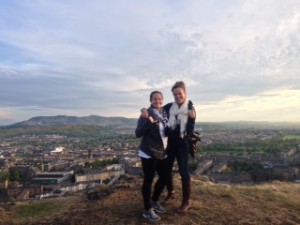
Morgan and fellow student from Exercise Science, Michaela Schenkelberg showing Gamecock pride on Arthur’s Seat
The second day of the conference also got off to an early start with setting up my poster presentation for the session later that day. I also spent about an hour with my advisor and director of theBEACH Lab discussing ongoing and future project directions. I presented the results from first part of the Parks, Environmental Justice, and Obesity Project within the BEACH Lab, where we examined whether park availability and park quality were equitably distributed across neighborhoods with varying socioeconomic disadvantage. We also examined whether this relationship between park availability/quality and neighborhood disadvantage was moderated by the racial/ethnic composition of the neighborhood. Our main findings indicated that park availability was equitably distributed in this setting; however, parks in high disadvantaged areas were almost twice as likely to have more park and neighborhood quality concerns than low disadvantaged neighborhoods. Also, this association was moderated by neighborhood racial/ethnic minority composition in that high disadvantaged neighborhoods had similar park and neighborhood quality concerns regardless of racial composition, but for low disadvantaged block groups, the number of park and neighborhood quality concerns increased as the racial/ethnic minority composition of the neighborhood increased. I had several wonderful conversations about the project and future directions for this research. Not far away, Dr. Kaczynski also shared Stephanie Child’s research poster about community gardens and healthy eating from the Greenville Healthy Neighborhoods Project.
The afternoon was also filled with great research presentations regarding activing transportation, how our built environment influneces physical activity and sedentary behaviors in youth, and interventions that promote physical activity using the built environment features like parks and trails. The keynote speaker for Friday afternoon was Kylie Ball from Australia, and she discussed the critical topic of social inequalities in healthy eating and active living research. Consistently, socioeconomic status is one of the strongest predictors of health outcomes. Dr. Ball discussed some myths regarding this topic and different approaches and ideas that may be used to address both the social and behavioral determinants of health. In her concluding comments, she suggested that there shouldn’t be a special group as a part of the conference that focused on social inequalities – rather, all of the research done in the field of nutrition and physical activity should seek to address such inequalities within the framework of the research because inequalities are pervasive and there are no exceptions when working in real-world settings. Her lecture was particularly powerful because I think it’s a tough truth that requires innovation and often a change in perspective. It was also quite encouraging to me because I have hope that with the innovative theoretical approaches, methodologies, statistical techniques, and interventions, this generation of researchers will begin to better understand the complexities of health inequities, behavior change and disease prevention. After a wonderful evening watching the UEFA championship football match at a local pub with Dr. Kaczynski, my trip to Scotland was concluded… because I was off to Ireland!
The quick trip to Ireland included a walking day tour of Dublin City, where I learned of Ireland’s rocky history, recent recession, and path to change. I saw the beautiful Trinity College, St. Patrick’s Cathedral, toured the historic Guinness storehouse, and listened and danced to Irish music. The last full day of the trip included a bus tour to the opposite side of the country, the west coast of Ireland, where I toured the quaint port city of Galway Bay, had lunch in the fishing town of Doolin, and witnessed the breathtaking and ever popular Cliffs of Moher. These cliffs sit 700 feet above the Atlantic Ocean and were in the top 30 finalists for the Seven Natural Wonders of the World. Those memories are unforgettable!

Cliffs of Moher
It’s back to the real-world, a quick realization I had when I checked my e-mail after the 9-day trip. Though sometimes daunting, this journey towards my PhD has been amazing. I am privileged to have the opportunity to attend the University of South Carolina’s Arnold School of Public Health, work with Dr. Kaczynski and the other students in the BEACH Lab on innovative research projects, and be a part of the team at LiveWell Greenville, where I’m also gaining invaluable experience about the art and science of working with communities to promote active living and healthy eating.
I’m knee deep in my dissertation proposal literature review, so you may not hear from me for a while! Hope everyone has a safe, healthy, and fun summer!
Live Well!!
Morgan Hughey
